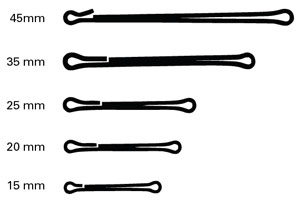What Is a Waddington Shank?
Have a question you want answered? Email it to us at [email protected].
Question: What’s a Waddington shank, and how is it used in fly tying/fishing?
via email, California

photo courtesy of Partridge of Redditch
Answer: For any question that hints at traditional fly tying and fishing, I immediately seek the advice of Dick Talleur, who has tied and fished traditional Atlantic salmon flies for years. Here’s his response:
“The Waddington shank is just that—a supplemental hook shank that can accommodate a wide range of salmon hooks. It comes in a variety of lengths, from 15mm to 55mm. It is similar in concept to the tube fly, in that it facilitates using small hooks on large flies. There are several advantages with this, and my experiences fishing for salmon in Russia bear out their value. However, I have never tied on a Waddington; I used tube flies instead.
Partridge produced Waddington shanks for many years. I don’t see them listed in the current on-line catalog, and I’m not sure if they are in current production from any manufacturer. However, I do see them listed in several west coast catalogs, as they are popular with the steelheaders. Tying information can be found in Poul Jorgensen’s Salmon Flies; Their Style, Character, And Dressing.”
In actual use, the leader is passed through the front loop of the Waddington — basically a doubled shank around which the fly is dressed — then along-side of the fly, through the rear hook-holder loop and to the hook, which typically swings freely.
The Waddington shank also adds weight to a fly, and the doubled wire creates a very wide profile. Many patterns use a small treble hook attached to the rear of the Waddington shank, although this is clearly not an option on some waters because of regulations.











